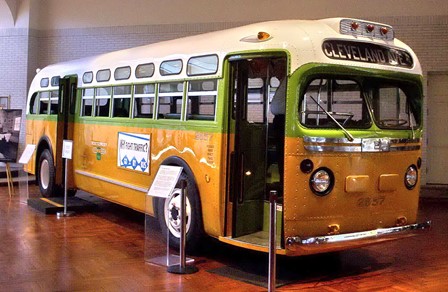 Is non-violence effective?
Is non-violence effective?

Le Dernier Temps begins with the historical scene of the Salt March in 1930, led by Hindus to free themselves from the yoke of the British colonialists. Gandhi was convinced that « right means lead to right ends ».
For everyone, against the oppression, against insurmountable difficulties, non-violence is ineffective. Not for Gandhi. All his life, he remained convinced of its validity.
Over the years, this form of social struggle has been adopted by whole populations around the world in campaigns for social justice.
You may wonder if it is still effective today. Let’s start by understanding what it is.
< Gandhi at Dandi, South Gujarat, collecting salt on the beach on 5 April 1930, at the end of the Salt March
In his book The Politics of Nonviolent Action, Professor Gene Sharp, a leading expert on nonviolent resistance, uses the following definition: « Nonviolent action is a technique by which those who reject passivity and subservience, and who see struggle as essential, can fight without resorting to violence. Nonviolent action is not about avoiding or ignoring conflict. It is a way of addressing the question of how to take effective political action, and in particular how to use one’s powers effectively.

^ ^ Montgomery bus that Rosa Parks boarded on December 1, 1955, Henry Ford Museum. Rosa Parks refused to give up her seat. This sparked the Montgomery Bus Boycott, an important event in the American Civil Rights Movements.
Initially, non-violence was an attitude based on individual morality. With modern social struggles, this attitude has been transformed into a collective means of action. Non-violence delegitimises violence, promotes an attitude of respect for the other in conflict and is a strategy for political action to combat injustice.
One of the theoretical bases of nonviolence is that the power of rulers depends on the consent of the people. Therefore, nonviolence seeks to undermine this power by denying the rulers the consent and cooperation of the masses.

There are three main categories of non-violent action: protest and persuasion, including demonstrations and vigils; non-cooperation; and non-violent interventions, such as blockades and occupations.
By its very religious origins, it still covers different realities today.
Barcelone, 19 July 1936 >
Non-violence is a founding principle of all religions in India (Jainism, Hinduism, etc.), Christianity, Judaism (although the term as such never appears in the Bible), Islam, but also in philosophy. It is more simply defined as « opposition to violence without harming or causing harm to others ».
However, Judeo-Christian non-violence is not universal like “ahimsâ”, the original non-violence, first formulated in India. Indeed, biblical « non-violence » is limited to humans. For example, it does not reject the rituals of slaughtering animals and eating meat.
In Hinduism, Jainism, Buddhism and Sikhism, non-violence, called “ahimsa”, and sometimes translated as ‘non-nuisance’, is extended to all creatures, in connection with the belief in reincarnation and vegetarianism.

LNon-violent combat uses means that the adversary does not control and in front of which he is most often powerless or destabilised: means of persuasion (letters, petitions, etc.), means of pressure (marches, demonstrations, sit-ins, etc.) and means of constraint (strikes, boycotts, civil disobedience, etc.) which will force him to give in, to negotiate, to recognise his rights. Unlike the violent combatant, even after a failure, the non-violent combatant is never definitively defeated, even if the repression has succeeded in putting an end to his life. For its supporters, a non-violent struggle is never lost: it always contains an element of victory.

These principles (non-violent persuasion, pressure and coercion) also apply to conflicts between people. When faced with a violent punch or blackmail, non-violent offer more effective responses than a boxing match with an uncertain outcome.
Doubt it? Read on.
Contrary to what many people think, social science studies show that non-violence is twice as effective as violence in the context of authoritarian regimes.
In 2011, two American researchers compared 316 violent and non-violent resistance movements between 1900 and 2006. Their study shows that non-violent movements are generally twice as effective as violent ones. But this does not mean that non-violence succeeds every time: only 40% of non-violent movements achieved their goal.
Non-violence is sometimes more effective for two reasons.

The first is that non-violence allows for a mass movement. A non-violent movement can bring together large sections of the population, especially people who are vulnerable: the elderly, the young, the disabled, the economically precarious, who cannot take part in a violent movement because violence has much higher personal, psychological and physical costs, and so violent movements often bring together fewer people than non-violent ones. But there is strength in numbers.
The second reason is that non-violence creates divisions in the opponent. And these divisions are the strength of the non-violent, unlike violence, which polarises and welds the opponent together. This is a point that has often been noted in history: violent means divert attention from the cause that is being pursued and focus the debate on the use of violence.
The International Day of Non-Violence is celebrated on 2 October, the anniversary of the birth of Mahatma Gandhi, leader of the Indian independence movement and pioneer of the philosophy and strategy of non-violence.


